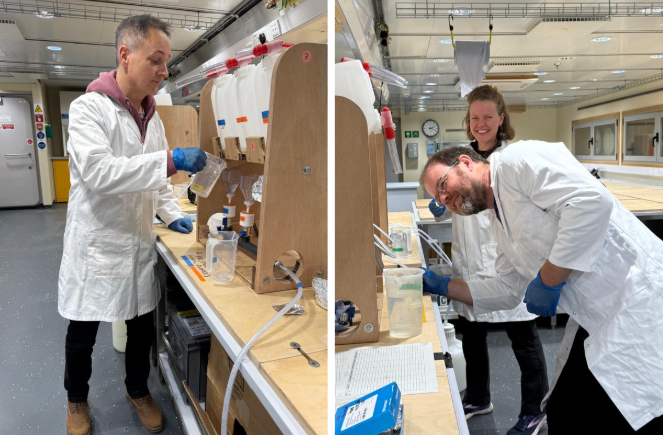Professor Mike Meredith is an oceanographer at British Antarctic Survey. He concludes a first of its kind science cruise on the RRS Sir David Attenborough conducting research in the polar winter.
Winter in Antarctica is typically the preserve of the few hardy souls who "winter over" at the research stations scattered across the icy continent. But this year, I've had the extraordinary privilege of spending time in the Southern Ocean aboard the RRS Sir David Attenborough during the Antarctic winter – a rare opportunity that has yielded some fascinating scientific insights.
Antarctica may seem remote, but its influence stretches across our entire planet. The melt from its vast ice sheet contributes to rising sea levels globally. Changes in ocean circulation and sea ice affect climate patterns worldwide. Even shifts in the Southern Ocean's chemistry and biology ripple through ecosystems thousands of miles away. While we've established these connections scientifically, we still need to understand the detailed mechanisms controlling these processes and how they might change in future. This knowledge is crucial if we're to take meaningful action now to minimise negative impacts and prepare for inevitable changes.

Most Antarctic expeditions happen during the austral summer when conditions are relatively forgiving – warmer temperatures, minimal sea ice, and those famous endless daylight hours. But some critical processes function very differently during winter months. Glacier melting patterns change, nutrient delivery to the ocean shifts, and the growth of plankton – the foundation of the marine food web – follows different rhythms. Gathering winter data is challenging when you're facing hostile weather, extensive sea ice, and perpetual darkness, which makes our expedition particularly valuable.

Even in these early stages of analysis, our winter expedition has revealed some intriguing findings. We've mapped the seabed near important glacial systems with greater precision, improved our understanding of how ocean processes drive wintertime glacier melting, and begun exploring how these glacial systems might actually help fuel marine life. There's still extensive work ahead to fully analyse everything we've collected, but the value of conducting these rare winter expeditions is already crystal clear.

Beyond the science, being here has been an extraordinary personal experience. The brief winter days create extended twilight periods where sunrise and sunset blend together, painting the ice and ocean in spectacular colours. On clear nights, the dark skies reveal stunning views of stars and the Milky Way, unimpeded by light pollution. We've witnessed glaciers calving icebergs right before our eyes – a powerful reminder of the dynamic nature of this seemingly frozen landscape.

I was surprised by how much wildlife we encountered, possibly due to this winter's unusually light sea ice cover. During just one day of our southbound journey, we spotted over a hundred humpback whales. We've also had frequent visits from inquisitive seals, coming to investigate our scientific equipment in the water. Their company was particularly welcome during the long, dark winter nights!

This winter research expedition to Antarctica has been both scientifically valuable and personally transformative. We're returning home not just with new scientific knowledge, but with a deeper appreciation for this remarkable place – a frozen wilderness that, despite its remoteness, connects to all our lives through its profound influence on our shared planet.






